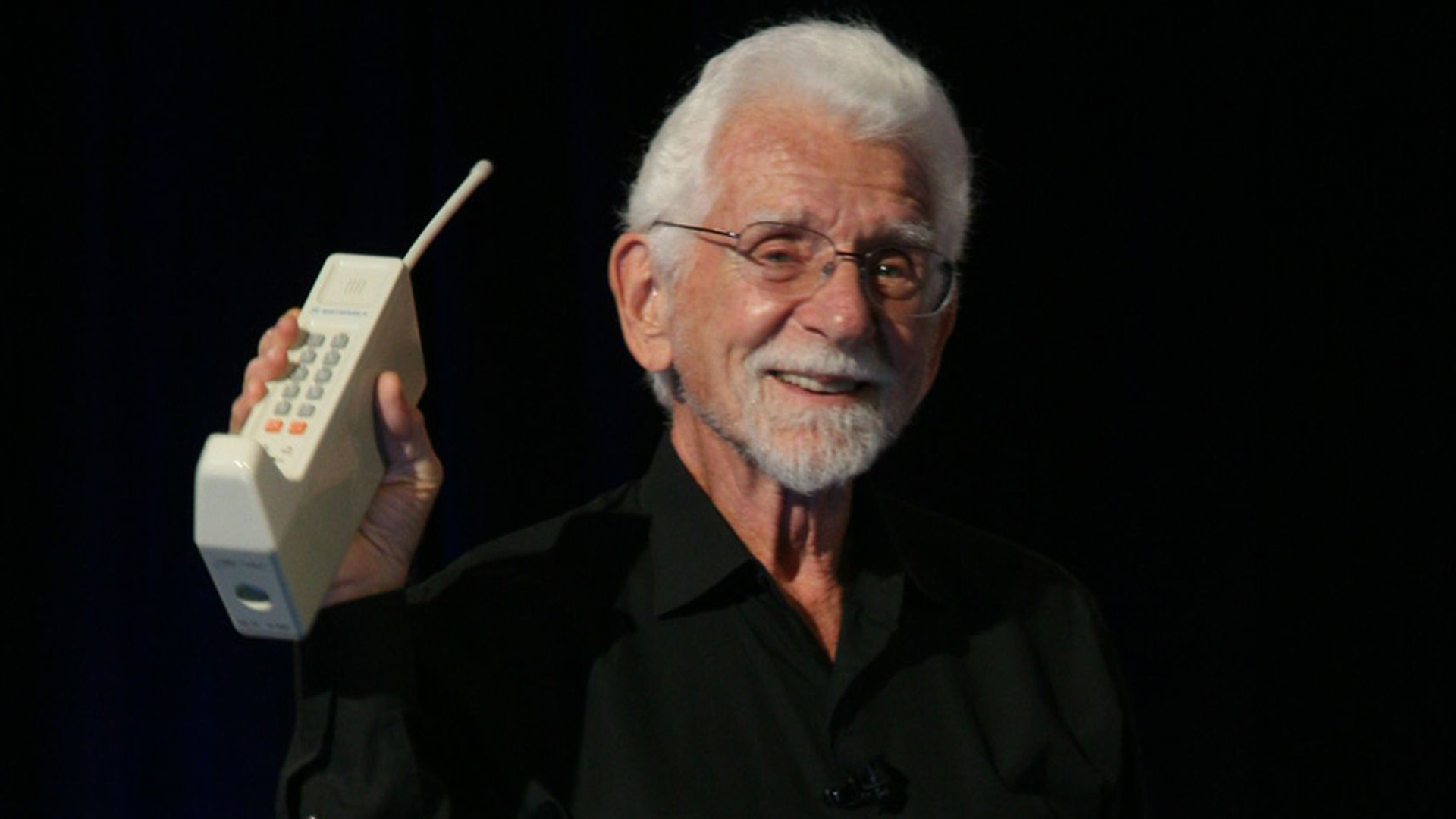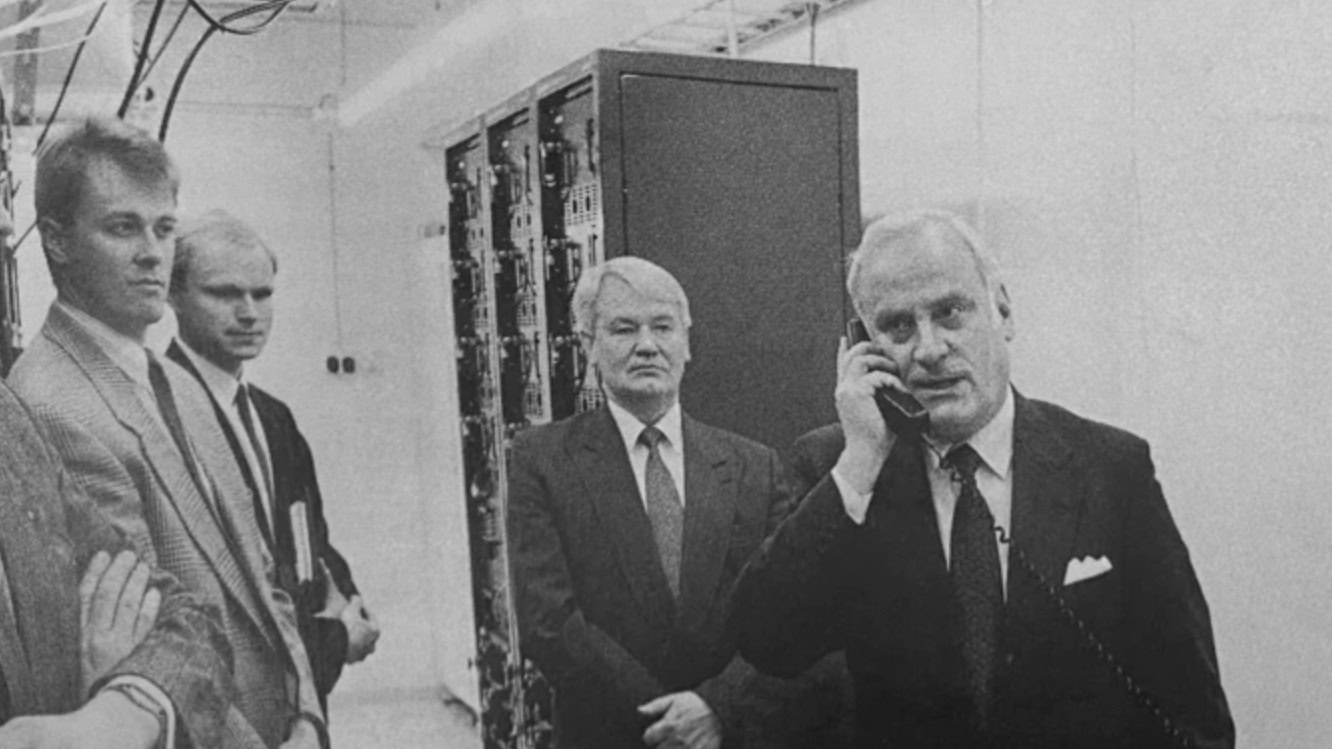Affiliate links on Android Authority may earn us a commission. Learn more.
The history of cell phones: A decade-by-decade timeline
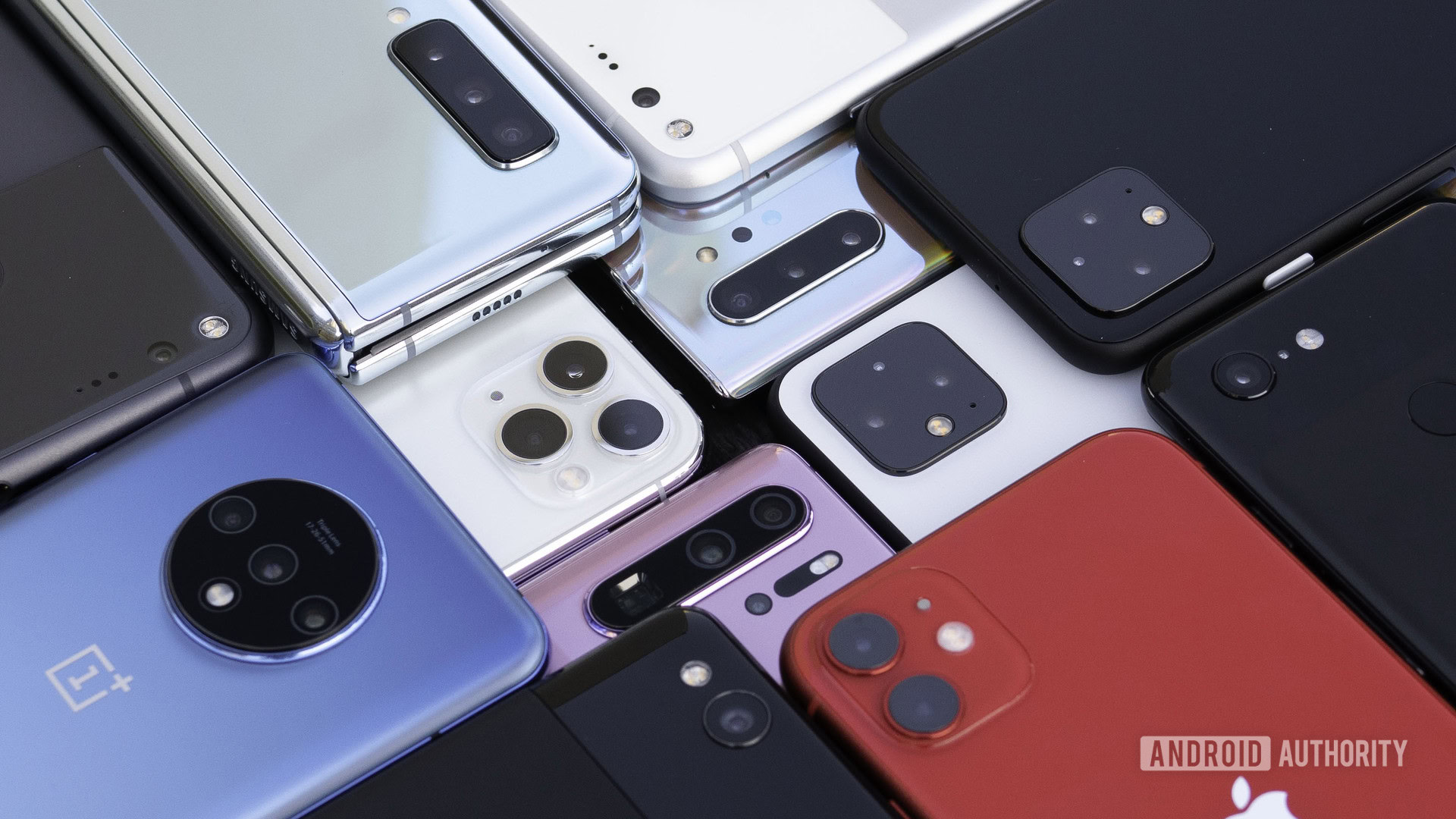
In just a few decades, mobile phones have gone from a luxury reserved for the elite to an essential tool for billions of users. From the first in-car phones of the 1940s to the best smartphones of today, the evolution of cell phones is nothing short of remarkable. To that end, let’s look at the history of cell phones. We’ll go through the evolution one decade at a time — from the first-ever wireless network to the proliferation of mobile apps, it’s all here.
Early portable phones: Pre-1970s cell phone history
The modern cell phone owes its existence to automobiles and trains, two industries that adopted wireless communication nearly a century ago. In the 1920s, German company Zugtelephonie AG developed and sold wireless telephony equipment to train operators. A couple of years later, the service was offered to first-class travelers on the route between Hamburg and Berlin.
Then, during the Second World War, the Allied powers deployed over 130,000 units of the SCR-536 Handie-Talkie (pictured above). This bulky contraption was essentially an entirely handheld two-way radio transceiver. As you’d expect from such an early technology, it suffered many drawbacks, including short battery life and a lackluster range of just one mile depending on the terrain. Still, it was more than useable, and the company behind it would eventually become the Motorola we know today.
The modern cell phone has its roots in the Second World War.
After the war ended, American company Bell Labs began working on an in-car system allowing users to place calls from anywhere. This led to the Mobile Telephone Service (MTS) launch in 1946, or the first-ever wireless telephony system.
Bell Labs’ car phone equipment weighed 80 pounds in its first generation. And even with all that weight, you could only use it in major US cities and along select highways. Despite these limitations, the service quickly gained popularity. It became so popular that the service quickly reached its maximum capacity due to the limited radio channels available at each base station. Users would have to wait in line for a channel to become available.
Car phones became increasingly popular among businesses and wealthy individuals in the 1950s and 1960s, but the high cost meant they remained out of reach for most people.
The 1970s and 1980s: The first mobile phone
After decades of research and development, Motorola unveiled the world’s first cell phone prototype in 1973. Martin Cooper, the Motorola engineer who led the development of this invention, invited reporters to witness the first-ever wireless phone call. He then proceeded to ring his direct rival, Joel S. Engel of Bell Labs, from the streets of New York City.
Motorola took a decade and $100 million to develop the first cell phone.
However, Motorola wasn’t ready to put cell phones in their customers’ pockets yet. It would take a full decade and over $100 million to develop a final, consumer-ready version. In 1983, Motorola would finally go to market with the DynaTAC 8000X. The phone was nearly a foot long and weighed roughly 2.5 lbs (over a kilogram). Still, anyone could buy one, which was revolutionary enough then. And despite its eye-watering $4,000 asking price, Motorola reportedly couldn’t manufacture enough units to keep up with demand.
The DynaTAC 8000X used a brand-new cellular network, specifically Bell Labs’ Advanced Mobile Phone System (AMPS). These days, we refer to AMPS as a first-generation cellular network (1G) or the precursor to 2G. AMPS was susceptible to signal noise and static as a purely analog network. It didn’t support text messaging or SMS either. The DynaTAC 8000X could store 30 contacts but offered little else in the way of features otherwise.
It didn’t take long for more companies to follow in Motorola’s footsteps. Nokia, for example, entered the cell phone market in 1987 with the Mobira Cityman 900. The phone’s 1.6 lbs (760g) weight represented a significant upgrade over the DynaTAC. Another year later, Samsung released its first-ever cell phone in 1988 with the SH-100.
The birth of 2G and GSM
The 1990s marked a time of rapid change in the cell phone industry, particularly with the release of smaller and more portable devices. But arguably, the most important development of this decade was the Global System for Mobile communications (GSM), the first fully digital cellular standard. In 1991, GSM’s efficiency was perceived as a necessary advancement as the existing analog network rapidly approached maximum capacity. These days, we refer to GSM and CDMA as second-generation cellular networks or simply 2G.
GSM didn’t just improve call quality; it paved the way for text messaging and eventually brought the internet to mobile phones. It also used encryption by default, meaning that you could finally have a conversation without the fear of being eavesdropped on. Finally, worldwide GSM adoption meant users could swap SIM cards to switch carriers.
The 1990s: SMS and the world’s first smartphone
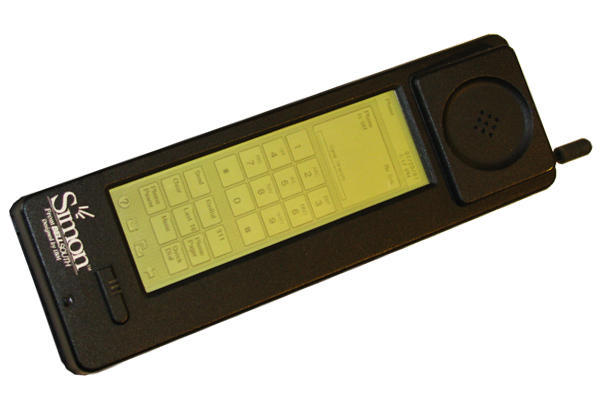
Even though SMS was built into the GSM standard, it would take another couple of years before Nokia would release the world’s first phone capable of composing a text message. Released in 1994, the Nokia 2010 featured a numeric keypad with letter mappings for text input. This became the standard layout for cell phone keypads until full QWERTY keyboards and touchscreens arrived.
As Finnish company Nokia made a name for itself, other electronics giants like IBM and Ericsson also began to test the waters. In 1994, IBM partnered with wireless carrier BellSouth (now merged with AT&T) to sell the Simon — the first phone to also function as a touchscreen PDA. The Simon had a vast feature set for its time, including an address book, calendar, and notepad. It could also send and receive emails and fax messages.
In the couple of years that followed, handset makers began experimenting with various form factors. The Nokia 8110, for example, earned the “banana phone” nickname due to its prominent curvature and sliding form factor. It even made an appearance in the 1999 blockbuster The Matrix.
Motorola, meanwhile, released the first-ever clamshell-style flip phone in 1996. The StarTAC’s top half folded down to protect the display and keypad. However, Motorola’s big selling point for the device was its impressive 3oz (88g) weight.
Towards the end of the 20th century, we also saw the future potential of cell phones with the BlackBerry 850. The device featured a 32-bit Intel processor, a full horizontal keyboard, and encrypted email software — all for just $400. The company behind BlackBerry, Research in Motion, would go on to dominate the enterprise cell phone market over the next decade.
Early 2000s: A turning point in cell phone history
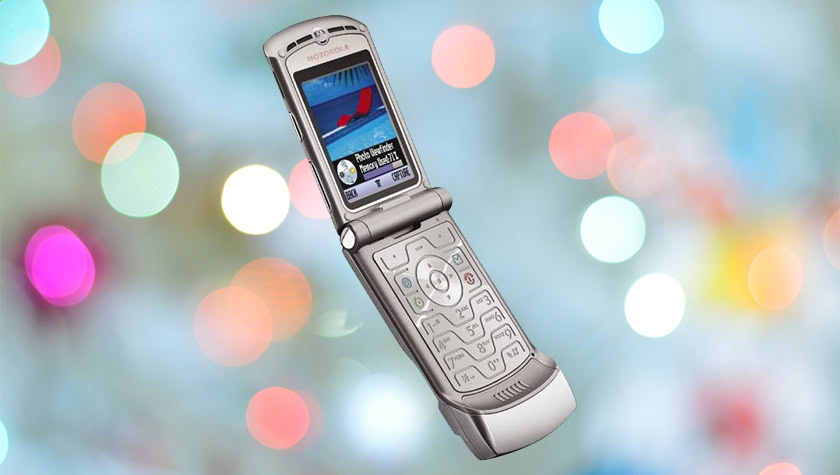
While the 2000s started off with carriers like DoCoMo in Japan testing 3G cellular service, the system wouldn’t catch on for a while. Cell phone manufacturers, meanwhile, found themselves amid an intense race to innovate and outperform the competition.
The decade saw the rise of full-color LCD displays and multimedia features like audio playback. Phones could also access the internet at faster speeds via the GSM-based General Packet Radio Service (GPRS). Sony and Ericsson made the first phone to include Bluetooth connectivity as early as 2001.
The Sharp J-SH04, meanwhile, became the first cell phone to feature a camera. Launched in the year 2000, the phone was sold exclusively in Japan. Two years later, Sanyo and Sprint teamed up to release the first camera phone in the US. The SCP-5300 featured a 0.3-megapixel camera, a color display, and a clamshell form factor. At $400, it was reasonably priced and almost universally praised. The slew of stellar budget camera phones available in today’s market shows just how far the industry has come.
The early 2000s saw the arrival of cameras and fashionable designs to mainstream cell phones.
The next few years saw device makers experimenting with form factors yet again. Nokia unveiled its infamous GameBoy-like N-Gage, and BlackBerry brought QWERTY keyboards to the mainstream with the Quark series.
And for the first time in the history of cell phones, designs started to resemble fashion accessories rather than utilitarian tools. The Motorola Razr V3 was perhaps the perfect embodiment of this trend with its magnesium-aluminum build and unbelievably sleek profile. It went on to become the best-selling clamshell phone of all time. According to many estimates, Motorola sold well over 100 million units of the Razr V3 in the four years between 2004 and 2008.
The early 2000s witnessed a market share split between Symbian, Palm OS, and Windows Mobile operating systems. These platforms rapidly gained key features like PDF rendering, video conferencing, copy-paste, and even support for third-party apps, paving the way for full-fledged smartphones.
The late 2000s: The first iPhone and Android 1.0
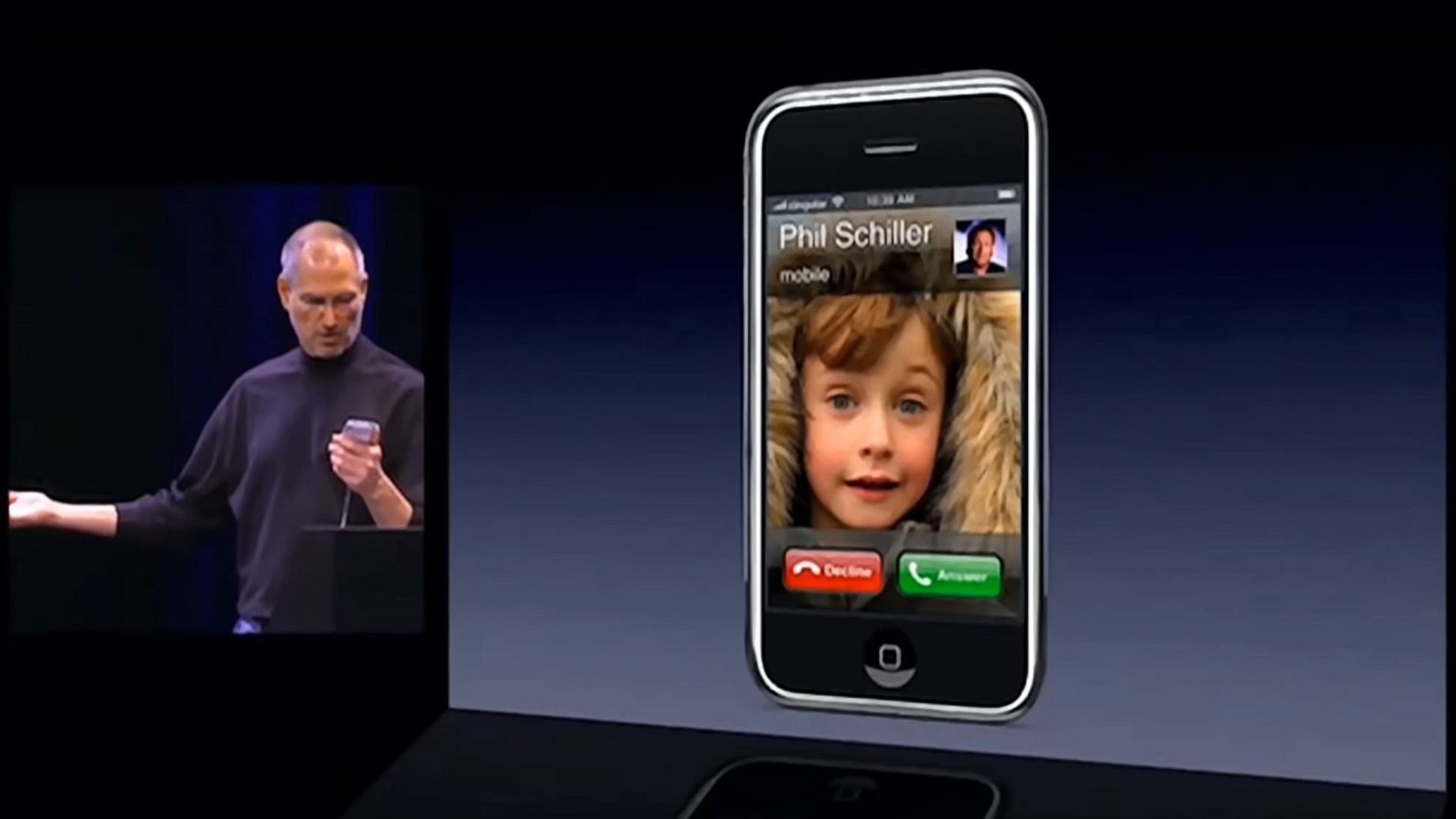
Competition in the cell phone market began heating up in the latter half of the 2000s. And despite a looming recession, consumer demand remained high worldwide.
In 2007, Apple entered the cell phone market with the iPhone. The company announced it as “a revolutionary mobile phone, a widescreen iPod with touch controls, and a breakthrough Internet communications device.” Indeed, it was the first phone to fully embrace the touch interface and fulfill three use cases in a single device.
While touchscreen phones already existed at the time, the iPhone didn’t need a stylus and used cutting-edge capacitive hardware instead. Apple’s clever software innovations like multi-touch were an added bonus. The iPhone’s large display also enabled browsing the internet on a relatively compact device for the first time. Likewise, it was the first cell phone in history to include dedicated YouTube and Google Maps apps.
The iPhone revolutionized the cell phone industry overnight.
Apple introduced the App Store in 2008, unlocking new functionality through third-party apps. It ended up being a wildly successful move. Facebook, one of the most popular apps on the digital storefront at the time, gained over a million downloads before the year ended.
The iPhone’s success single-handedly popularized the notion of modern-day smartphones. It prompted Google to rethink its strategy with Android — the mobile operating system it was developing behind closed doors at the time. When Android debuted on the HTCG1 in 2008, Google ensured it included a large touchscreen, a fully-featured web browser, and the Android Market app store. The rest is history.
The early 2010s: iPhone and Android take over
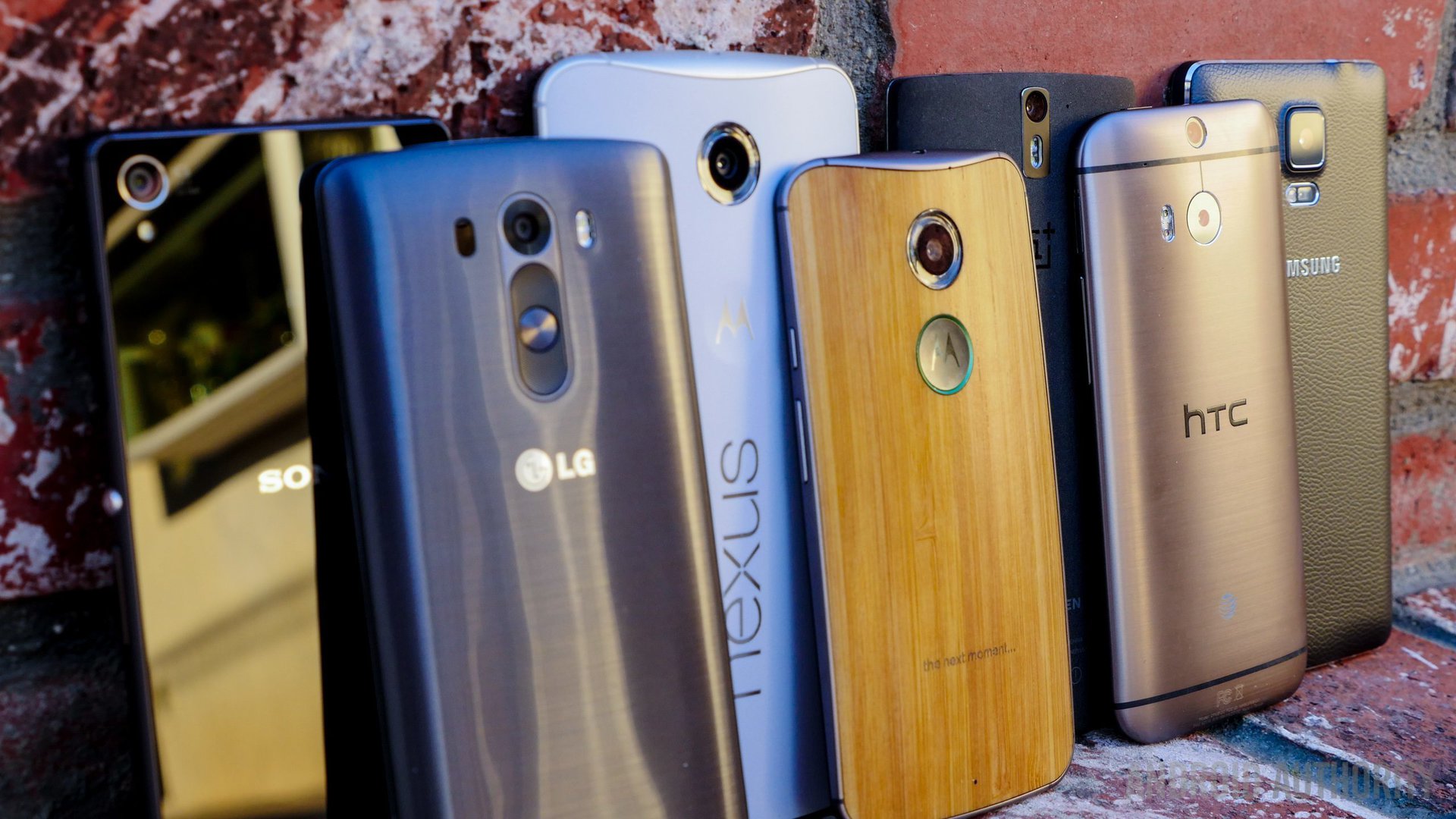
The early 2010s marked a period of consolidation in the cell phone industry. Consumers demanded a feature-rich software experience that matched the iPhone, but not every player could deliver. Symbian, BlackBerry OS, and Windows Mobile all received major overhauls. However, they couldn’t keep up with the rich app ecosystems of Apple’s iOS and Google’s Android.
As for design trends, physical buttons on cell phones were clearly on the way out even as early as 2010. The Samsung Galaxy S, for example, switched to capacitive touch buttons on the front, leaving just a single physical home button. Only a few years later, phones would feature edge-to-edge displays with no front-facing buttons whatsoever.
Cellular data speeds improved considerably in this decade, thanks to the widespread adoption of 4G LTE. The first Android phone to feature 4G connectivity was the HTCEvo in 2010. Apple would later bring LTE to the iPhone 5 in 2012.
The early 2010s marked a period of consolidation around a select few hardware and software choices.
Around this time, the industry witnessed a big push toward improving camera quality. The Nokia 808 PureView blew the competition away with its large 41-megapixel camera sensor. Similarly, the Lumia 920 became the first phone to include optical image stabilization (OIS). And in 2018, HUAWEI introduced the world’s first triple-camera phone — the P20 Pro.
The 2010s also introduced lesser-known hardware firsts like Near Field Communication (NFC), eSIM support, and water resistance (IP ratings). Samsung even brought heart rate and blood oxygen saturation sensors to its Galaxy S series smartphones. Qi wireless charging gained momentum after 2012, too, with Nokia being the first to adopt it in the Lumia 920.
Late 2010s and early 2020s: The future of smartphones
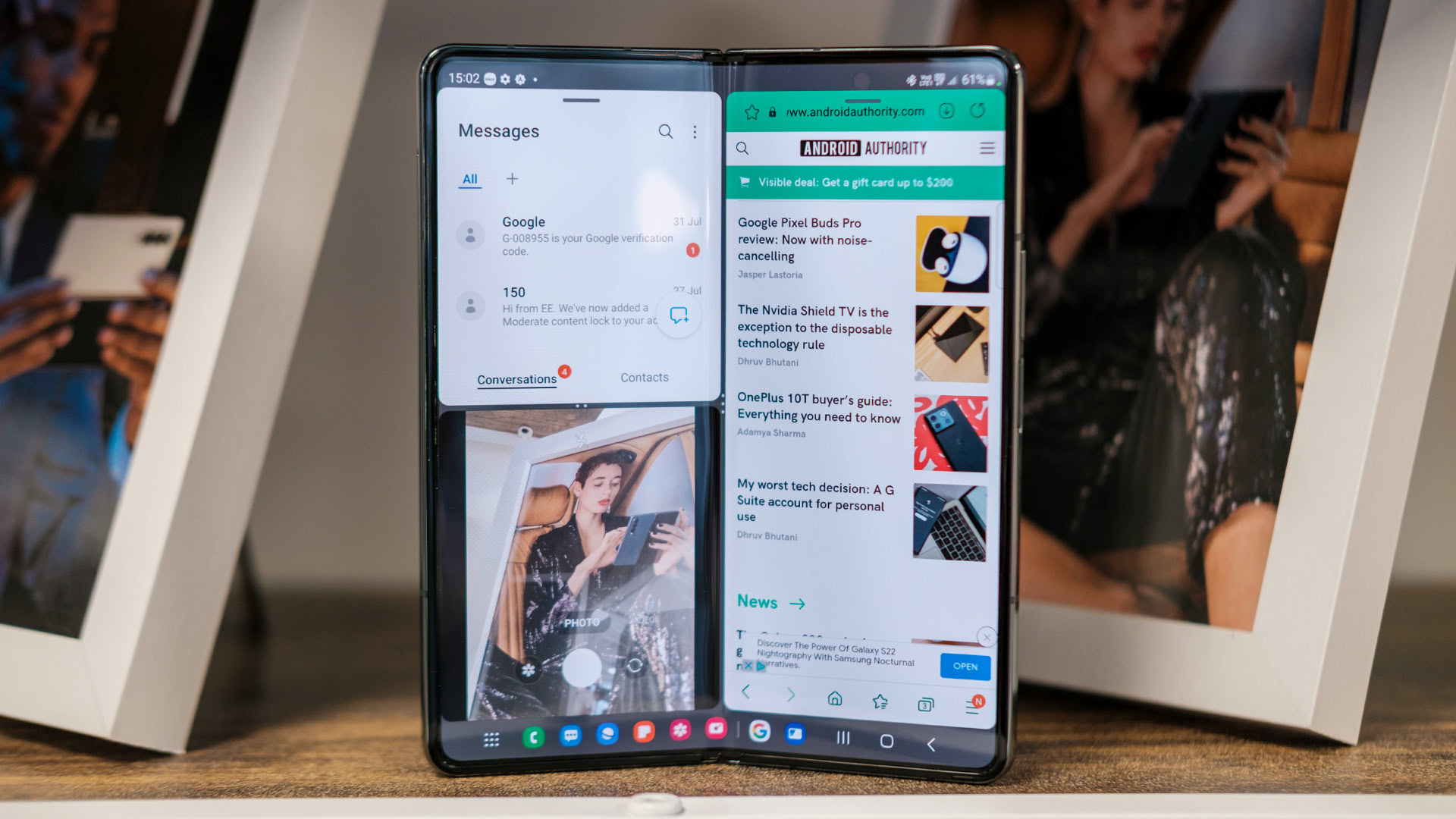
The late 2010s finally catapulted the cell phone market beyond low-resolution camera sensors. Handset manufacturers like Google, with its Nexus and Pixel series, and HUAWEI also began to combine large camera sensors with cutting-edge software. The result? Smartphone cameras yielded images that rivaled dedicated point-and-shoot cameras despite the latter having more capable hardware. It didn’t take long for other handset makers to catch up. Today, virtually every smartphone on the market relies on computational photography, albeit to a varying degree.
This period also marked the rise of the foldable form factor. Technically, the Royole FlexPai holds the record as the first-ever foldable phone. However, it wasn’t until the Motorola Razr and Samsung Galaxy Z Fold launched in 2019 that the market took off in earnest. Now, the likes of Google, OnePlus, and OPPO have debuted foldable phones.
Setting aside the new foldable form factor and camera improvements, it may seem like cell phone advancement slowed down in the 2020s. However, there’s still much to look forward to as handset makers experiment with under-display cameras, magnetic accessories, and generative AI and machine learning-based software features. And if that isn’t enough, the latest iPhone can directly communicate with satellites in space, marking a new chapter in cell phone connectivity.

